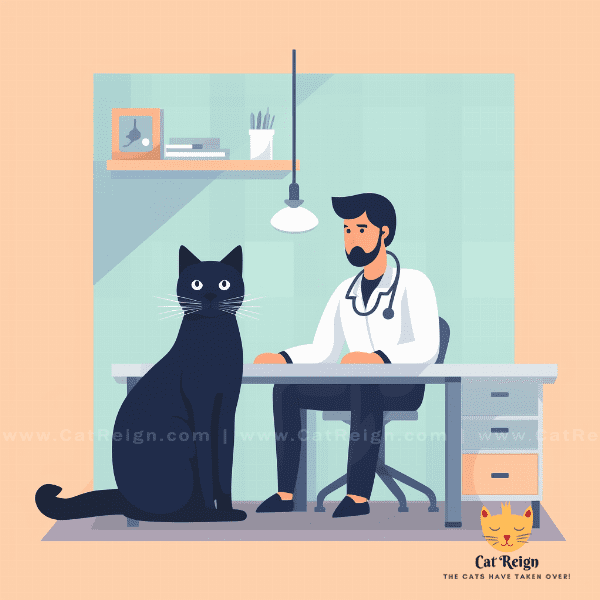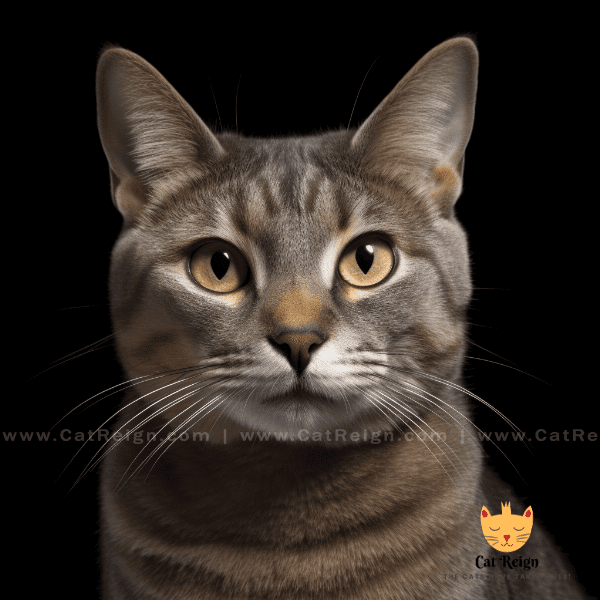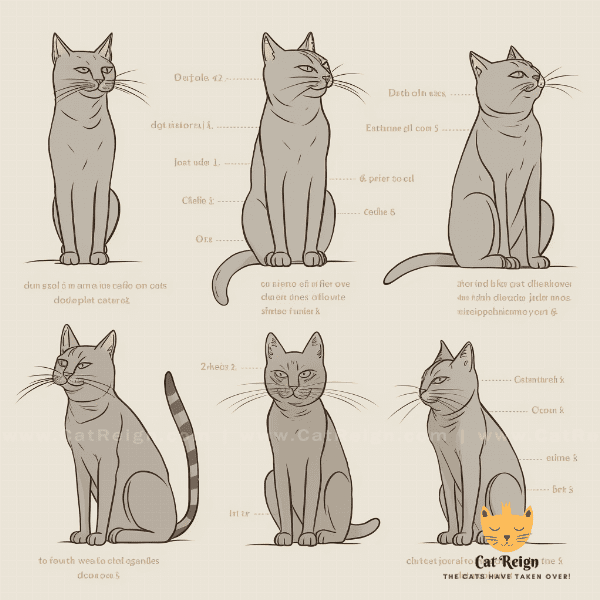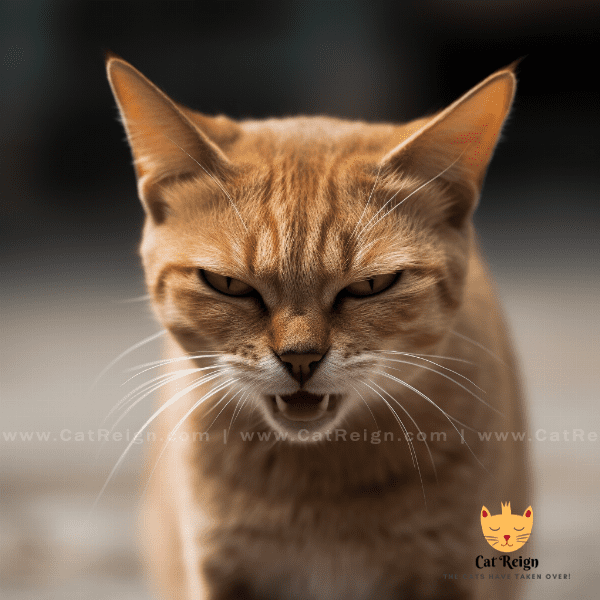Table of Contents
- Understanding Feline Stress
- Common Causes of Stress in Cats
- The Importance of Body Language
- Signs of Stress in Cat Body Language
- Recognizing Facial Expressions in Cats
- Interpreting Vocalizations
- Body Language and Aggression
- Strategies to Reduce Feline Stress
- Creating a Calming Environment for Your Cat
- Seeking Professional Help for Stressed Cats.
Understanding Feline Stress
Cats, like humans, experience stress in their daily lives. Stress can be defined as a physical, mental, or emotional response to a challenging or threatening situation. Although cats are independent animals, they can be easily affected by stressful events. It is important to understand what triggers stress in cats and how they express their stress through their body language.
The Nature of Feline Stress
Stress in cats can be acute or chronic. Acute stress is a short-term response to a particular situation, such as a loud noise or an unfamiliar visitor. Chronic stress, on the other hand, is a long-term response to persistent stressors, such as a change in the environment or the absence of a family member.
The Effects of Stress on Cats
Stress can have a significant impact on a cat’s physical and mental well-being. Chronic stress can lead to a weakened immune system, digestive problems, and behavioral issues. Some cats may become aggressive or fearful, while others may become withdrawn and inactive.
The Importance of Identifying Stress in Cats
It is important to identify stress in cats early on to prevent it from becoming a chronic issue. Learning to recognize the signs of stress in your cat’s body language can help you take action to alleviate their stress and promote their well-being.
In the next section, we will discuss the common causes of stress in cats and how they can be identified through their body language.
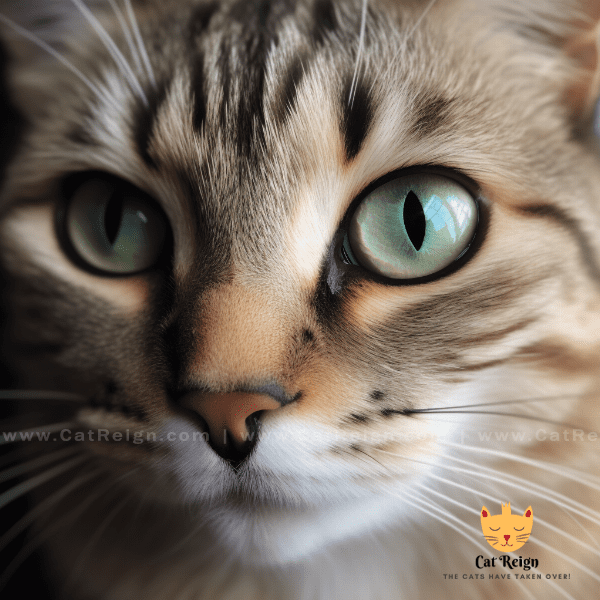
Common Causes of Stress in Cats
There are many potential stressors that can affect cats. Some of the most common causes of stress in cats include:
Changes in the Environment
Cats are creatures of habit and can become stressed by changes in their environment. This can include moving to a new home, rearranging furniture, or bringing in new pets or family members.
Lack of Stimulation
Cats are intelligent animals and need mental and physical stimulation to stay happy and healthy. A lack of stimulation can lead to boredom and stress.
Unfamiliar People or Animals
Cats can become stressed when they encounter unfamiliar people or animals. This can include visits from strangers or introducing a new pet to the household.
Changes in Routine
Cats thrive on routine and can become stressed when their routine is disrupted. This can include changes in feeding times or a disruption in their playtime schedule.
Identifying the specific cause of stress in your cat can be challenging. However, by observing their body language and behavior, you can gain insight into what may be causing their stress. In the next section, we will discuss how to interpret your cat’s body language to recognize signs of stress.

The Importance of Body Language
Body language is a crucial aspect of communication for cats. They use various body postures and movements to convey their emotions, including stress. Understanding your cat’s body language can help you identify when they are feeling stressed and take action to help them feel more comfortable.
Eye Contact
Eye contact is another important aspect of Cat body language. When stressed, cats may avoid eye contact or stare intently at a perceived threat. Dilated pupils can also be a sign of stress or fear.
Grooming Behavior
Cats are known for their fastidious grooming habits. However, when stressed, they may over-groom or stop grooming altogether. This can lead to skin irritations and other health issues.

Signs of Stress in Cat Body Language
Cats use a variety of body language cues to communicate their stress levels. By recognizing these signs, you can take action to alleviate their stress and promote their well-being.
Tail Posture
The position of a cat’s tail can reveal a lot about how they are feeling. When stressed, cats may tuck their tail between their legs or hold it low to the ground. A tail that is twitching or lashing back and forth can also be a sign of stress or aggression.
Body Posture
As mentioned earlier, a cat’s body posture can reveal a lot about their stress levels. When stressed, cats may crouch low to the ground, with their weight shifted to their back legs. They may also arch their back and puff up their fur to appear larger.
Facial Expressions
Cats’ facial expressions can also indicate their stress levels. When stressed, cats may narrow their eyes or have dilated pupils. They may also lick their lips more frequently or yawn excessively.
Changes in vocalizations can be a sign of stress in cats. When stressed, cats may meow more than usual, growl, or hiss when feeling threatened.
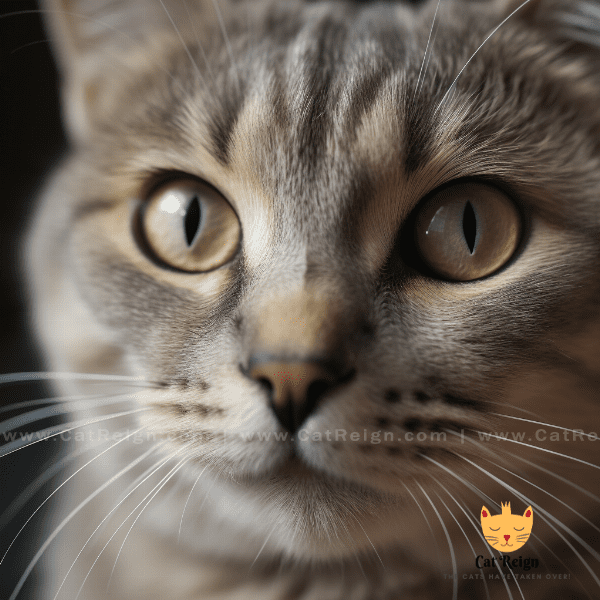
Recognizing Facial Expressions in Cats
Eyes
Cats’ eyes can reveal a lot about their emotional state. When stressed, cats may have dilated pupils or narrow their eyes. They may also avoid eye contact or stare intently at a perceived threat.
Mouth and Lips
Changes in a cat’s mouth and lips can also indicate their stress levels. When stressed, cats may lick their lips more frequently or pull their lips back in a grimace. They may also pant or drool excessively.
Whiskers
Cats’ whiskers can be an indicator of their emotional state. When stressed, cats may pull their whiskers back against their face. They may also twitch their whiskers rapidly or hold them out to the sides.
As mentioned earlier, cats’ ears can reveal a lot about their emotional state. When stressed, cats may flatten their ears against their head or rotate them backwards.
Overall Expression
Taking all of these facial expressions together can give you an overall sense of your cat’s emotional state. When stressed, cats may appear tense or apprehensive. They may also have a furrowed brow or appear to be in pain.
By recognizing these facial expressions in your cat, you can gain insight into how they are feeling and take steps to alleviate their stress. In the next section, we will discuss how to interpret your cat’s vocalizations to gain further insight into their emotional state.
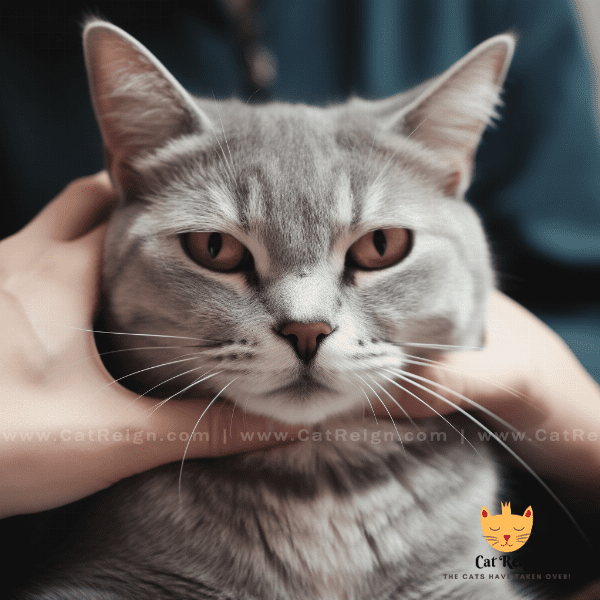
Interpreting Vocalizations
Cats use a variety of vocalizations to communicate their emotions, including stress. By interpreting your cat’s vocalizations, you can gain insight into how they are feeling and take steps to alleviate their stress.
Meows
Cats’ meows can reveal a lot about their emotional state. When stressed, cats may meow more than usual or meow in a higher pitch. They may also meow less than usual or stop meowing altogether.
Hisses and Growls
Hisses and growls are common vocalizations used by cats when they are feeling threatened or stressed. When stressed, cats may hiss or growl more frequently than usual. They may also hiss or growl when encountering unfamiliar people or animals.
Purring
While purring is often associated with contentment, cats may also purr when they are feeling stressed. When stressed, cats may purr in a lower pitch or more frequently than usual.
Chirps and Chatters
Chirps and chatters are vocalizations that cats use to communicate with each other. When stressed, cats may chirp or chatter more frequently than usual. They may also chirp or chatter when watching birds or other prey outside.
Silence
Sometimes, the absence of vocalizations can be a sign of stress in cats. When stressed, cats may become more withdrawn and stop vocalizing altogether.
By interpreting your cat’s vocalizations, you can gain insight into how they are feeling and take steps to alleviate their stress. In the next section, we will discuss how body language and aggression are related in cats.
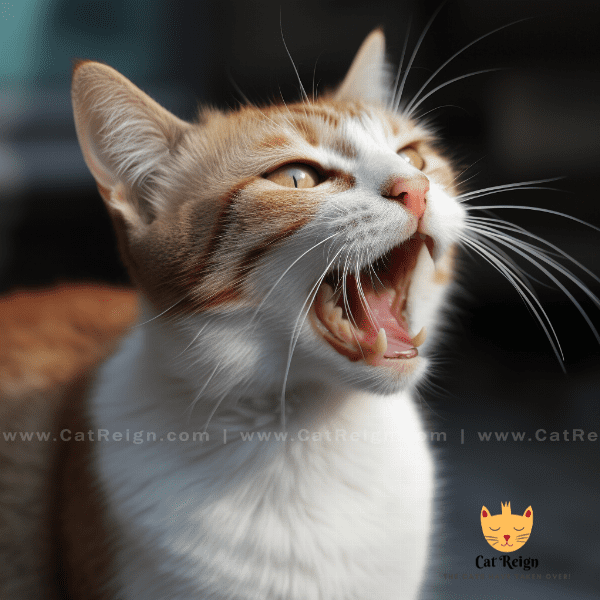
Body Language and Aggression
Body language and aggression are closely linked in cats. Understanding your cat’s body language can help you recognize when they may become aggressive and take steps to prevent or diffuse potentially dangerous situations.
Warning Signs
Cats often display warning signs of aggression through their body language. These warning signs may include flattened ears, a twitching tail, and dilated pupils. A cat may also arch their back, puff up their fur, and hiss or growl to communicate their aggression.
Defensive Aggression
Defensive aggression occurs when a cat feels threatened or cornered. In these situations, a cat may lash out with their claws or teeth to protect themselves. Defensive aggression can often be diffused by allowing the cat to retreat to a safe space and avoiding further confrontation.
Redirected Aggression
Redirected aggression occurs when a cat becomes agitated by one stimulus but redirects their aggression towards another, unrelated stimulus. For example, a cat may become agitated by a bird outside the window and then attack their owner who is attempting to pet them. Redirected aggression can be prevented by identifying potential stressors and removing them from the cat’s environment.
Play Aggression
Play aggression is a common behavior in young cats and kittens. Play aggression can be distinguished from true aggression by its playfulness and lack of intent to harm. However, it is important to redirect play aggression towards appropriate toys and discourage rough play with humans.
Understanding your cat’s body language and recognizing the warning signs of aggression can help you prevent potentially dangerous situations. In the next section, we will discuss strategies to reduce stress in cats and promote their well-being.

Strategies to Reduce Feline Stress
Create a Calming Environment
Creating a calming environment for your cat can help reduce stress. This can include providing a cozy and comfortable space for them to relax, minimizing loud noises, and ensuring they have access to fresh water and food.
Provide Mental and Physical Stimulation
Providing mental and physical stimulation is crucial for cats to stay happy and healthy. This can include providing toys, scratching posts, and playtime. Interactive toys such as puzzle feeders can also help reduce stress by engaging your cat’s mind.
Establish a Routine
Cats thrive on routine and can become stressed when their routine is disrupted. Establishing a consistent routine for feeding, playtime, and other activities can help reduce stress and promote their well-being.
Use Pheromone Products
Pheromone products such as sprays and diffusers can help reduce stress in cats. These products mimic the pheromones that cats release when they feel calm and relaxed, creating a sense of security for your cat.
Consult with a Veterinarian
If your cat’s stress levels persist, it may be necessary to consult with a veterinarian. They can help identify any underlying health issues that may be contributing to your cat’s stress and recommend additional strategies to reduce stress.
Reducing stress in cats is essential to promoting their well-being. By creating a calming environment, providing mental and physical stimulation, establishing a routine, using pheromone products, and consulting with a veterinarian when necessary, you can help your cat feel more comfortable and relaxed in their environment.
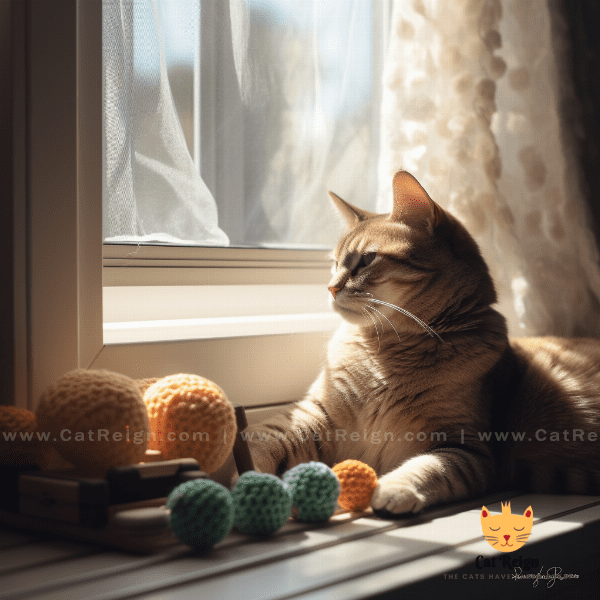
Creating a Calming Environment for Your Cat
Provide a Cozy and Comfortable Space
Cats need a comfortable space to relax and feel safe. This can include a cozy bed, a soft blanket, or a designated area in your home where your cat can retreat to when feeling stressed. Providing a comfortable space for your cat can help reduce their stress levels and promote relaxation.
Minimize Loud Noises
Loud noises can be a source of stress for cats. To create a calming environment, try to minimize loud noises in your home. This can include turning down the volume on the TV or radio, avoiding loud conversations, and keeping household appliances such as vacuums and blenders in a separate room.
Provide Access to Fresh Water and Food
Cats need access to fresh water and food to stay healthy and relaxed. Make sure your cat has access to clean and fresh water at all times. Providing food and water in separate locations can also help reduce stress by allowing your cat to eat and drink in peace.
Create a Safe and Secure Outdoor Space
If your cat enjoys spending time outside, create a safe and secure outdoor space for them to explore. This can include a screened-in porch or a secure outdoor enclosure. Providing a safe and secure outdoor space can help reduce stress by allowing your cat to enjoy the outdoors in a controlled and safe environment.
Use Calming Scents
Calming scents such as lavender or chamomile can help reduce stress in cats. You can use these scents by adding a few drops of essential oil to your cat’s bedding or using a diffuser to release the scent into the air.
Creating a calming environment for your cat is essential to reduce stress and promote their well-being. By providing a comfortable space, minimizing loud noises, providing access to fresh water and food, creating a safe and secure outdoor space, and using calming scents, you can help your cat feel more comfortable and relaxed in their environment.
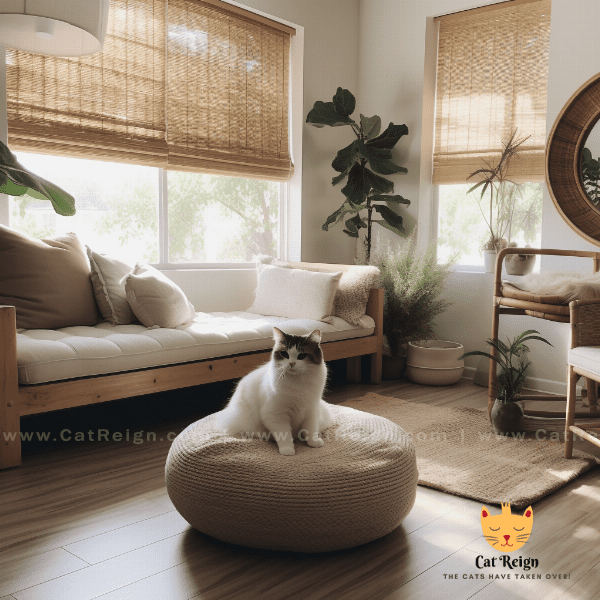
Seeking Professional Help for Stressed Cats.
If your cat’s stress levels persist despite your efforts to create a calming environment and provide mental and physical stimulation, it may be necessary to seek professional help. Here are some signs that may indicate that your cat needs professional help:
Behavioral Changes
If your cat’s behavior has changed significantly, it may be a sign of stress or an underlying health issue. For example, if your once-friendly cat has become withdrawn or aggressive, it may be a sign that they are experiencing stress.
Health Issues
Stress can contribute to a variety of health issues in cats, including gastrointestinal problems and urinary tract issues. If your cat is experiencing these or other health issues, it is important to consult with a veterinarian to rule out any underlying medical conditions.
Destructive Behavior
If your cat is exhibiting destructive behavior such as scratching furniture or tearing up carpet, it may be a sign that they are experiencing stress or anxiety.
Aggression
If your cat is exhibiting aggressive behavior towards people or other animals, it is important to seek professional help immediately. Aggression can be a serious issue and can pose a danger to both your cat and those around them.
Professional Help Options
There are several options for seeking professional help for your Stressed cat. These may include consulting with a veterinarian, a certified animal behaviorist, or a professional trainer. These professionals can help identify the root cause of your cat’s stress and recommend strategies to reduce it.
Reducing stress in cats is essential to promoting their well-being. If your cat’s stress levels persist despite your efforts, it may be necessary to seek professional help. By identifying signs that may indicate that your cat needs professional help and consulting with a veterinarian, certified animal behaviorist, or professional trainer, you can help your cat feel more comfortable and relaxed in their environment.
